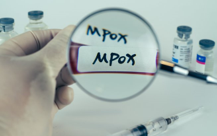
Four additional Mpox cases have been reported in KwaZulu-Natal and Gauteng, with infections expected to rise as contact tracing efforts are stepped up.
This pushes the total number of laboratory-confirmed cases of Mpox in South Africa to 20 since the outbreak in May 2024.
According to the Department of Health’s data, all cases involve males aged between 17 to 43 years old.
The recent infections include a 17-year-old man from Hillbrow in Johannesburg, a 37-year-old from Pretoria East, a 29-year-old from West Rand, and a 19-year-old from Durban in KwaZulu-Natal.
Of the 20 cases, 10 were recorded in Gauteng, nine cases in KwaZulu-Natal and one from Western Cape.
Meanwhile, the death toll has remained at three since the outbreak.
READ | Everything you need to know about Mpox disease
The department said outbreak response teams have been activated for the newly diagnosed cases.
“Another batch of Mpox-specific treatment is expected to arrive in the country in the next few weeks as the number of cases is also expected to rise due to intensified contact tracing, risk communication and community engagement activities in the affected communities.”
The National Institute for Communicable Diseases (NICD) has received over 130 test requests since the outbreak of Mpox in South Africa.
“The department appeals to all contacts of confirmed cases and suspected cases to cooperate with health workers during contact tracing, screening and 21-day monitoring period, to ensure no case is left undetected.”
According to the department, contact tracing is one of the critical tools available to effectively break the chains of local transmission and control the Mpox outbreak.
“All people with suspected symptoms are reminded to visit their nearest healthcare facility right away for clinical evaluation, diagnosis and treatment options, instead of self-diagnosing and isolation.”
The common symptoms of Mpox include a rash which may last for two to four weeks, fever, headache, muscle aches, back pain, low energy and swollen glands.
“The rash looks like blisters or sores, and can affect the face, palms of the hands, soles of the feet and so on,” the department explained. – SAnews.gov.za


